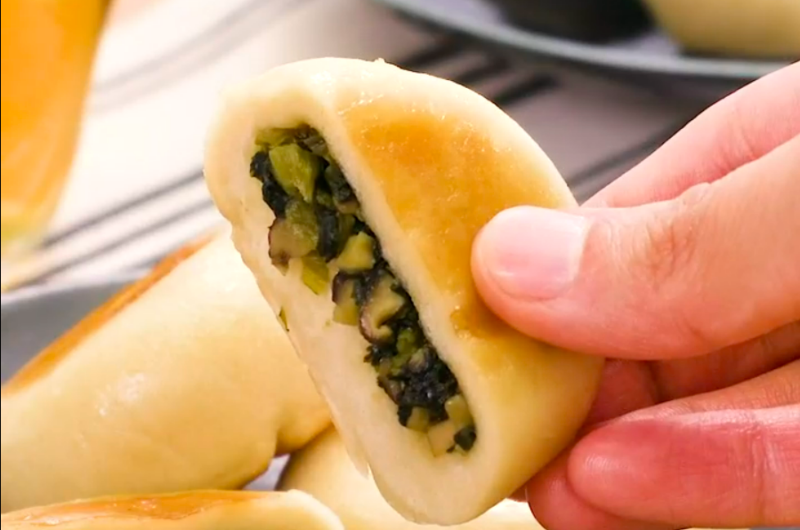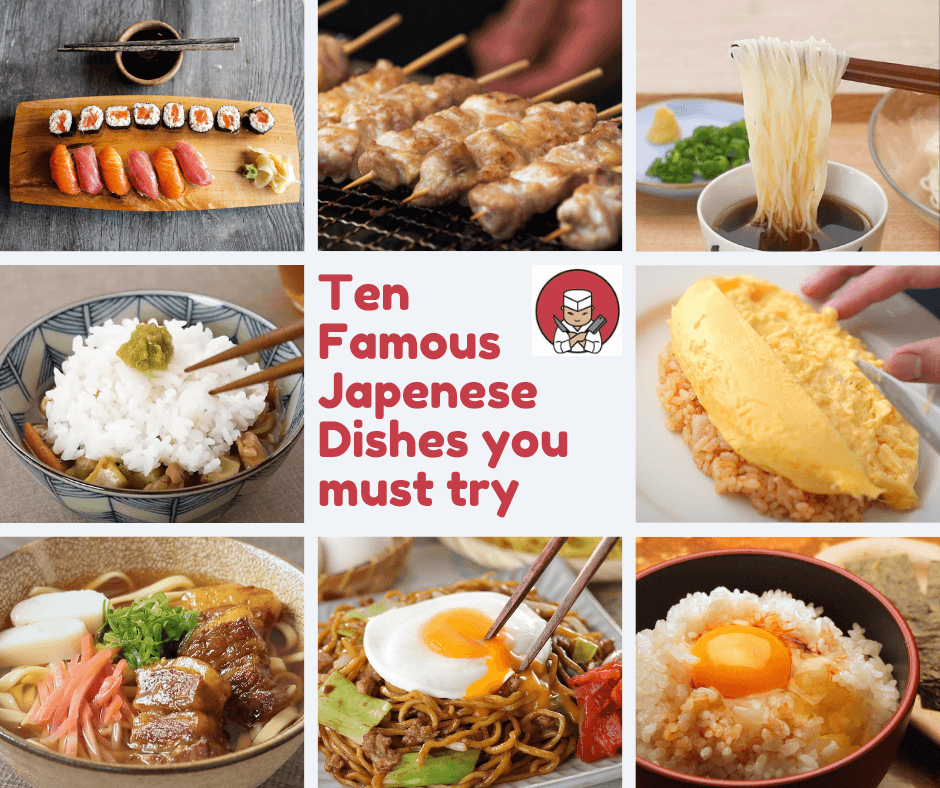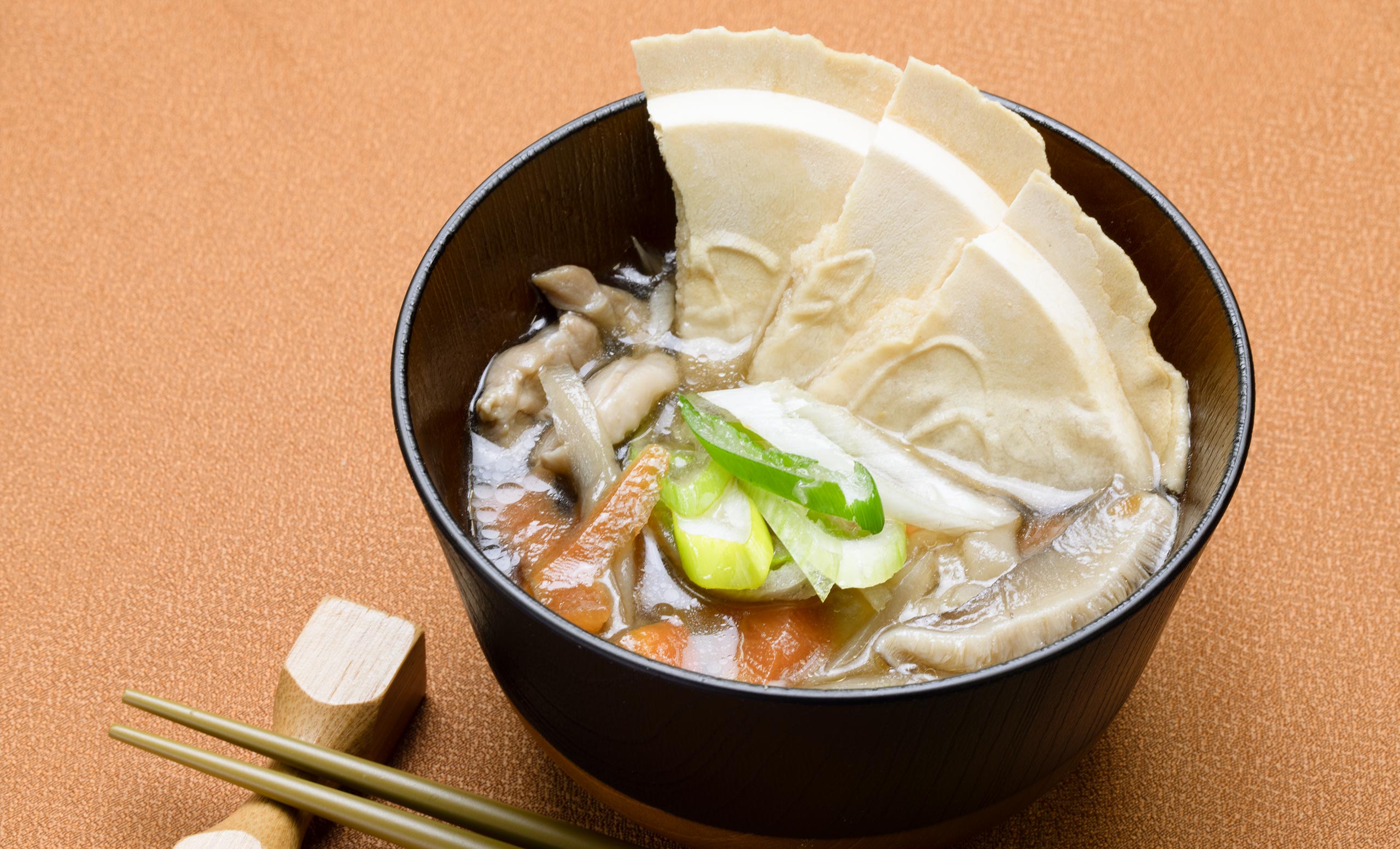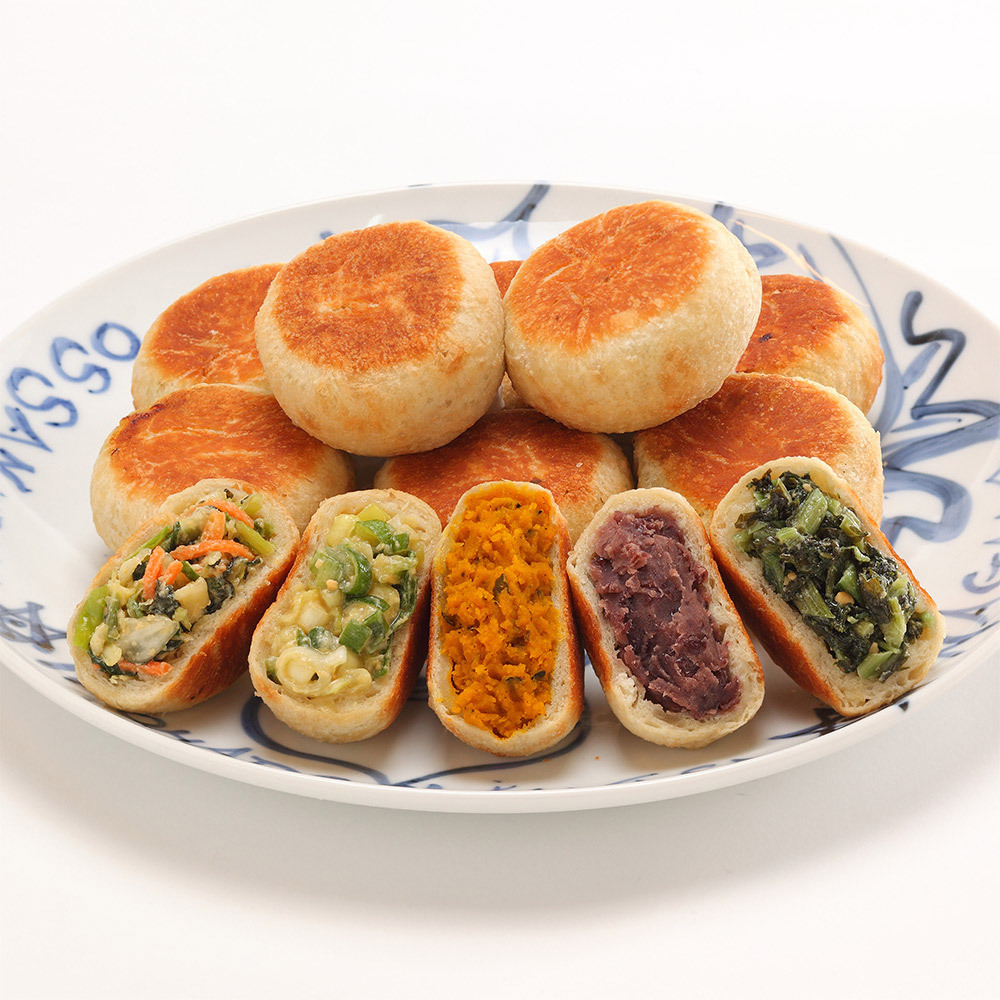
Oyaki (おやき) is a popular snack that is found throughout Nagano Prefecture (Chubu Region).
It is sort of like a large dumpling, or stuffed bun — it looks a bit similar to a fried version of a Chinese “baozi” (包子), or “shui jian bao” (水煎包) if you’re familiar with that. The taste is much different though.
“Yaki” (やき・焼き) simply means “to grill” or “to bake”, and is reference to the fact that the bun is typically grilled before or after being steamed.
Read on for more interesting info about oyaki!
Ingredients
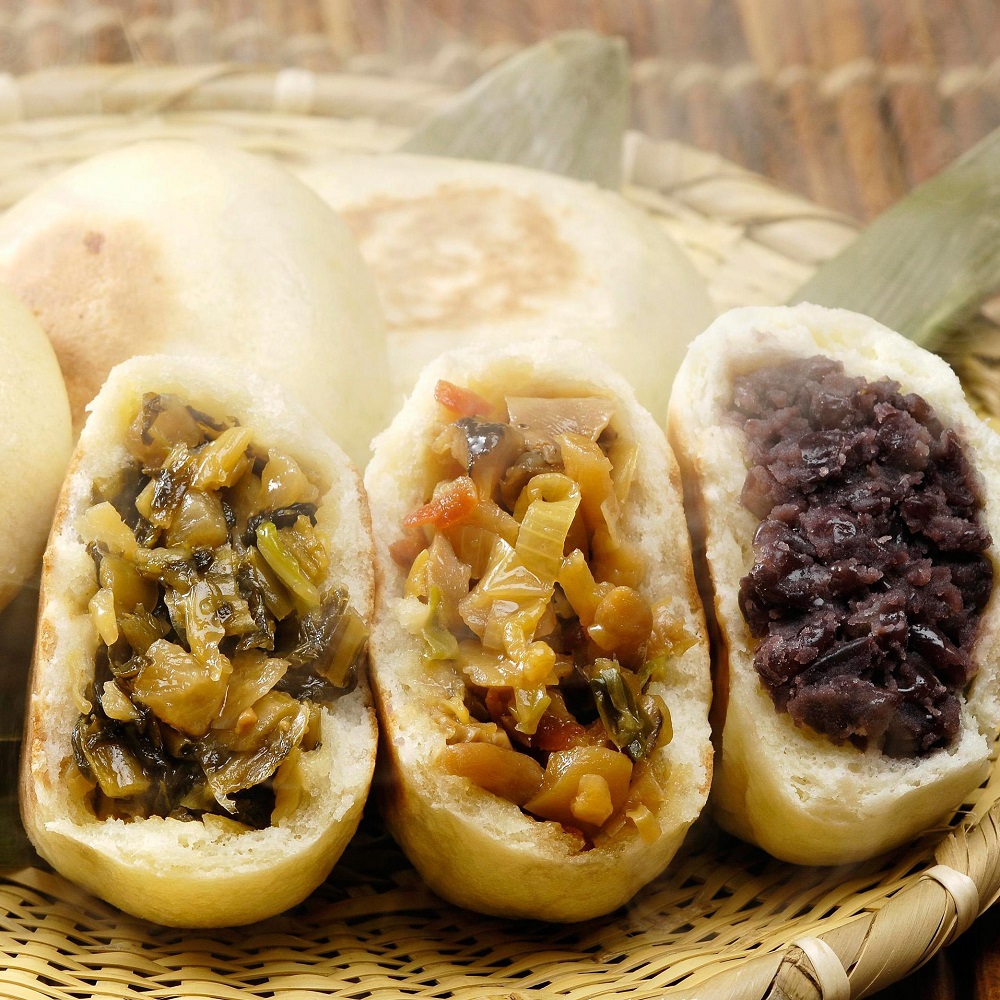
The main ingredients of oyaki are:
- Flour
- Buckwheat flour
- Various vegatables (for filling)
The oyaki dough is made by mixing buckwheat flour and wheat flour together with water. Buckwheat is famous in Nagano, and is a staple ingredient in other local dishes (e.g. soba noodles).
Various fillings can be used to make oyaki – both sweet and savory. Typically, vegetables are used. Some popular fillings include nozawa-na (a local pickled vegetable), eggplant, pumpkin, azuki (red bean paste), mixed seasonal vegetables, and apple.
Sometimes, even meats or fish are used as filling. Every shop may have their own unique flavors such as curry, or even pizza! Oyaki can also be cooked in many ways — grilled, baked, grilled then steamed, etc.
Location / Where to Eat
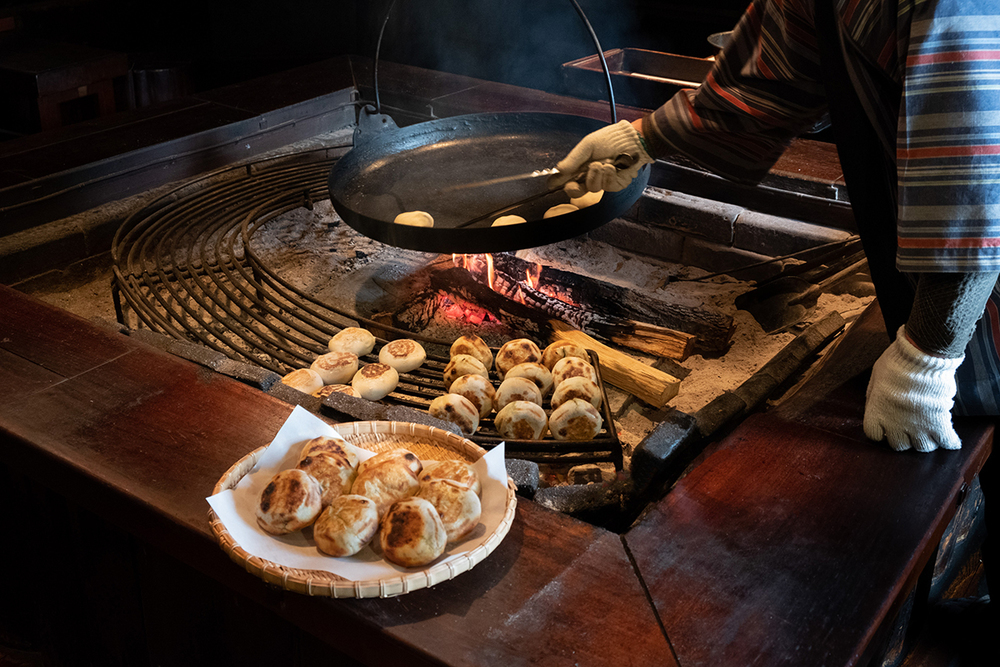
Oyaki is found throughout Nagano prefecture.
It can be purchased from small specialty vendors, souvenier shops, supermarkets, and even convenience stores.
Each area in Nagano may have their own specialty/style of making oyaki, so try as many as you can!
The original place of oyaki is said to be Ogawa Village, located in northwest region of Nagano. Ogawa is still famous for its oyaki, and was also rated as one of the top 100 most beautiful villages in Japan. If you are in the area, make sure to stop by Ogawa and taste some original oyaki!
Read more about oyaki’s interesting history below:
History / Origin of Oyaki
It is said that the earliest traces of oyaki can be traced all the way back to the Jomon period (i.e. 4,000 to 300 BC)!
While this may be hard to believe, it probably did not resemble modern day oyaki. In any case, oyaki has been a staple of Nagano prefecture for many generations.
In the past, rice was difficult to grow in Nagano due to its mountainous geography and cold climate. So, instead, locals grew wheat and buckwheat. Flour thus became a staple ingredient, and led to Nagano’s so called “flour food culture”.
Many popular local foods were established during this time, such as oyaki. It also became popular, because it was much easier and quicker to make compared to noodles (like soba or udon).
The Nagano government began promoting oyaki, and it slowly became the popular snack that it is today!
How to make Oyaki
The best way to try oyaki is simply to head over to Nagano and buy some from one of the numerous vendors.
If you’re not in Japan, or anywhere close to Nagano — or you just like doing things the hard way — then here is a simple recipe I found via Delish Kitchen.
It uses nozawana and shiitake mushroom as filling. Nozawana might be difficult to find outside of Japan, so you can use whatever filling you want.
Oyaki Recipe (おやき): Nozawana & Mushroom
Course: Snacks, MainCuisine: JapaneseDifficulty: Medium5
servings1
hour30
minutes159
kcal1
hour30
minutesHere is a simple to follow oyaki recipe from Delish Kitchen. It uses nozawana and mushrooms, though you can replace the filling with anything you want.
Ingredients
- Filling Ingredients & Seasonings
Pickled Nozawana … 100g
Shiitake mushrooms … 2
Sesame oil … 1/2 tablespoon
Sake … 1 tablespoon
Mirin … 1 tablespoon
Sugar … 1/2 tablespoon
Soy sauce … 1/2 tablespoon
- Dough
Flour (regular strength/all-purpose) … 200g
Salt 1/2 teaspoon
Boiling water 120cc
- Cooking
Salad/cooking oil … 1/2 tablespoon
Water … 50ml
Directions
- Prepare the vegetables. Soak the Nozawana pickled vegetables in water for about 30 minutes to remove excess salt, and then squeeze to drain. Cut into 5mm width. Cut off the roots of the shiitake mushrooms and roughly chop.
- Make the filling. Heat sesame oil in a frying pan, add shiitake mushrooms and fry over medium heat until soft. Add the nozawana pickles and stir-fry until everything is evenly coated in oil. Add the remaining filling ingredients and seasoning and stir-fry until all liquid evaporates. Set aside to cool.
- Prepare the dough. Add all-purpose flour and salt to a heat-resistant container and mix. Add boiling water slowly and mix until it becomes crumbly, then knead togther into a ball. You may not need to use all the boiling water. Cover with plastic wrap and leave at room temperature for about 30 minutes.
- Sprinkle some flour on a cutting board and place the dough on top. Divide dough into 6 equal parts, roll into balls, and roll out to about 10cm in diameter. Place 1/6 of the filling on top, pinching the dough from the edges, and wrap to shape the dough. Make 6 pieces in total.
- Heat the vegetable oil in a frying pan over medium heat. Add around oyaki pieces with the seam side down first, and pan fry until each side is brown. Add water, cover, and steam for about 5 minutes. Open the lid and evaporate the moisture.
Recipe Video
Summary
Have you ever tried oyaki before? What did you think of it?
The first time I tried oyaki was actually in beautiful Nozawa Onsen, famous for its ski resort, and local pickled vegetable — nozawana! Of course, I had no idea what nozawana was at the time, so I ordered an apple filling instead. It was delicious! Like an apple pie. 😂
Leave your thoughts and comments below!
Subscribe for free today! Receive cool recipes, my latest Japanese knife picks and learn about Japanese culture. Delivered every other week to your inbox.
